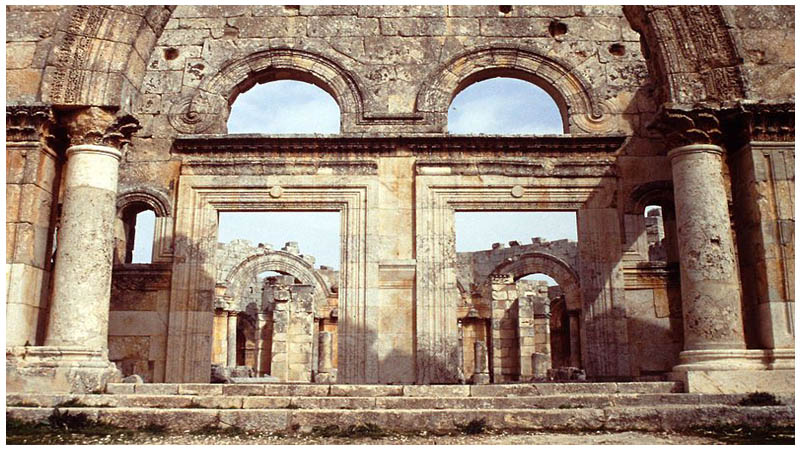Saint Simeon Stylites the Elder was born in the 4th century. A shepherd’s son, he found his love for Christianity when he was just 13 years old. At age 16 he entered a monastery; some years later, he felt the need for a more solitary life became a hermit monk.
In his quest for solitude, he did not choose to reside in a cave like many other monks of the day. Instead, he decided to live on top of a pillar: a stone column, 6 feet in diameter, that rose 60 feet from the ground. By living in this way, he believed that God would be closer to him.
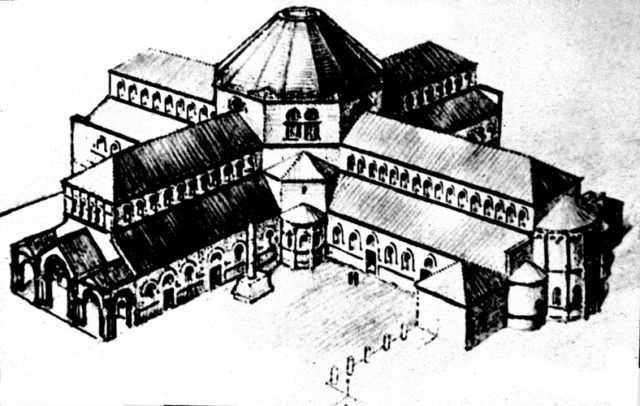
It wasn’t long before word got out and people came from far and wide to see him. He preached from his pillar twice a day and lived in his elevated residence for 37 years, until his death in the year 456 AD. A cornucopia of soldiers, an army of devotees, and seven bishops escorted his remains to their final resting place in the ancient Greco-Roman city of Antioch on the Orontes.
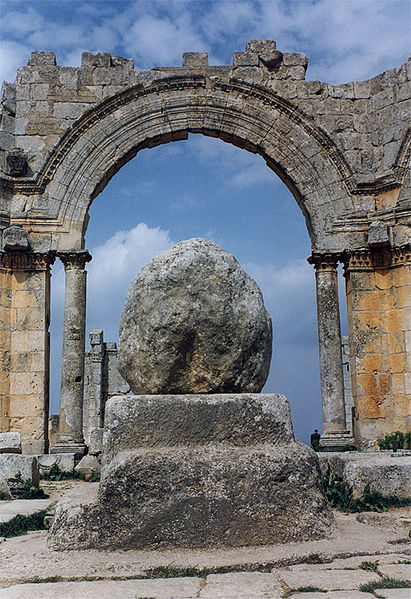
His grave immediately became a popular pilgrimage destination. Only a few years after his death, a church was erected in his honor on the exact spot where the pillar stood.
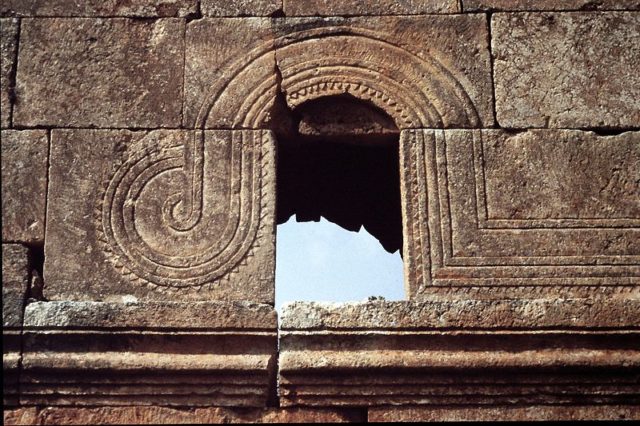
The church was comprised of four basilicas that surrounded and enshrined the pillar. Octagonal in shape, the church stands on over an acre of land – a site almost as big as that of the Hagia Sophia Church in Constantinople.
Despite their lands being of similar size, the two churches were placed in very different locations. The Hagia Sophia Church was located in a crowded area, whereas the Church of Saint Simeon Stylites sits 40 miles from the nearest human settlement.
Alongside the church, a monastery was built as well as a number of hostels and two more churches. All of these structures were enclosed inside a stone wall, giving them the appearance of a vast complex.
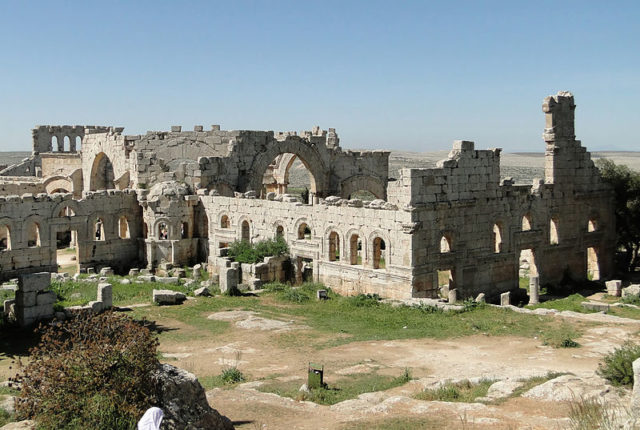
Multiple architectural styles were incorporated into the design of the Church of Saint Simeon. According to scholars, among the first elements to be built were the baptistery and the main basilica.
Next followed the monastery, which was erected close to the eastern basilica. The baptistery was located close to the southern basilica and was erected not long after the main church was finalized. At the time, the baptistery had some of the finest Christian architecture that Syria had witnessed.
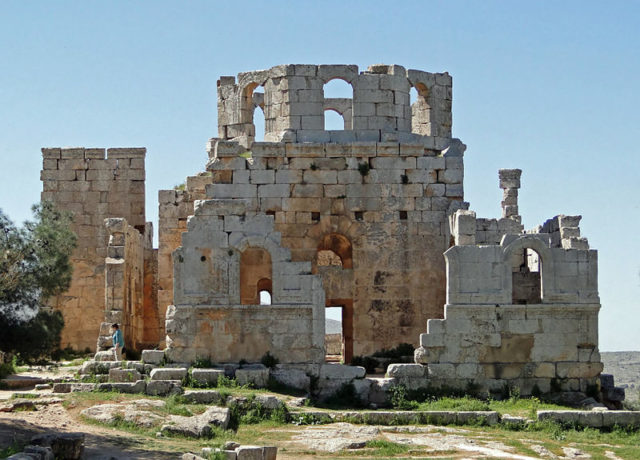
Octagonal in shape, the baptistery once had a stunning wooden roof. Over the years, the church experienced a couple of wars.
The first was the Arab-Byzantine War, during which Sa’d al-Dawla – the second ruler of the Hamdanid Emirate of Aleppo – attacked the complex and managed to conquer it. Despite everything, worshipers still came to this holy site.
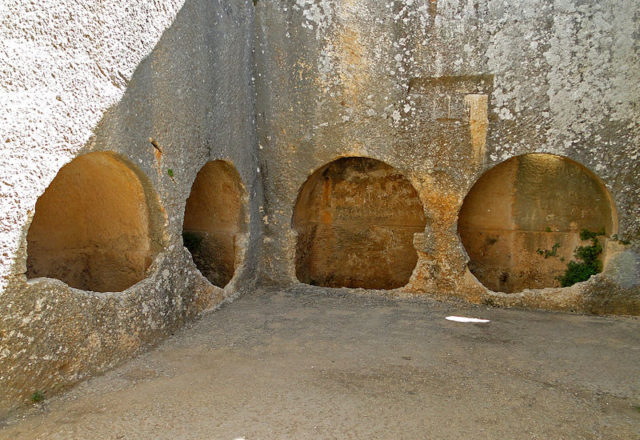
The Syrian Civil War followed many years later. Serious damage was inflicted on the whole complex and illegal stone removal caused many of the structures to fall into ruin. Further damages were incurred in 2016 during an air strike conducted by Russian Air Forces. The church was already in ruins when this happened but was still greatly affected.
Today, the military of Turkey holds an observation post on the complex. Over the years, the church has received a number of monikers, including “Simeon’s fortress” and “Simeon’s monastery.”
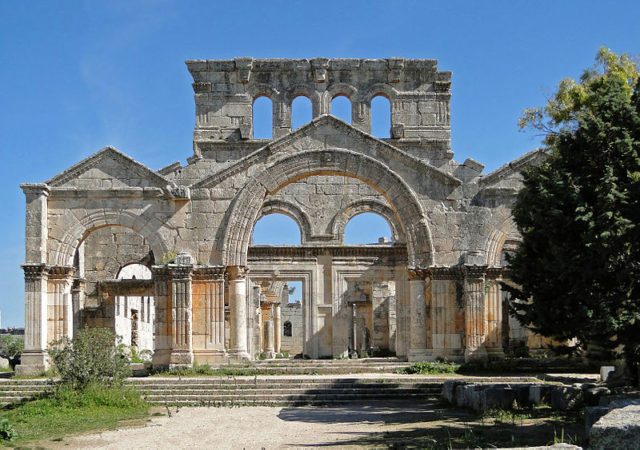
The church is a part of what is collectively known as Syria’s Dead Cities – a collection of 700 abandoned settlements. The pillar of Simeon still stands, although much of it is lost. Years of exposure to bad weather, wars, and artifact seekers have resulted in its height being reduced to only a couple of yards.
